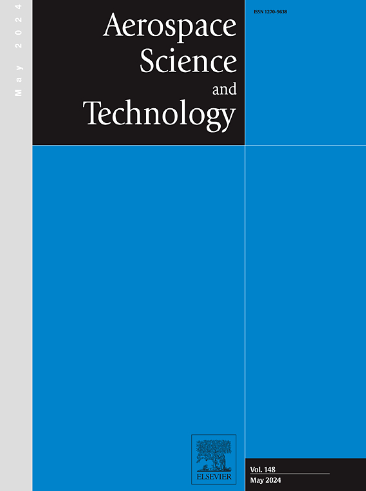Wall interference effects on helicopter rotor in closed and open wind tunnels
IF 5.8
1区 工程技术
Q1 ENGINEERING, AEROSPACE
引用次数: 0
Abstract
The wall interference effects substantially contribute to systematic errors in wind-tunnel experiments, which greatly impedes the accurate measurements of aerodynamic performance, hindering the development and optimization of helicopter rotors. This paper numerically investigates the wall interference effects on helicopter rotors in both closed and open wind tunnels based on a virtual blade model. Comprehensive analyses and comparisons are performed regarding the flowfield characteristics (including downwash flow and wake flow) and helicopter aerodynamic performance (including rotor torque coefficient and lift coefficient) under freestream, closed wind-tunnel, and open wind-tunnel conditions. Results indicate that the open and closed test sections have opposite impacts on the aerodynamic performance of the helicopter rotor. Specifically, the open test section gives rise to a more inclined rotor downwash flow, resulting in an overestimated measured rotor torque coefficient, which is however underestimated for the closed test section. At the low advance ratio, the open test section remarkably intensifies the negative lift on the fuselage, increasing the load while reducing the flat tail load. Conversely, the closed test section weakens both the fuselage and flat tail loads. Furthermore, at low advance ratios, flow breakdown is observed for both open and closed wind tunnels. Additionally, the open test section experiences wake escapement, which deflects the flow away from the return circuit, affecting its operation.
封闭风洞和开放风洞中直升机旋翼的壁面干涉效应
在风洞实验中,翼壁干涉效应是造成系统误差的主要原因,极大地影响了气动性能的准确测量,阻碍了直升机旋翼的研制和优化。本文基于虚拟叶片模型,数值研究了封闭风洞和开放风洞中壁面干涉对直升机旋翼的影响。对自由流、封闭风洞和开放风洞三种工况下的流场特性(包括下洗流和尾流)和直升机气动性能(包括旋翼扭矩系数和升力系数)进行了综合分析和比较。结果表明,旋翼试验段的开放和关闭对旋翼气动性能的影响相反。具体来说,开式试验段使转子下洗流更加倾斜,导致测量转子扭矩系数高估,而封闭试验段则低估了测量转子扭矩系数。在低推进比下,开放试验段显著增强了机身负升力,增加了载荷,同时减小了平尾载荷。相反,封闭的测试段削弱了机身和平尾载荷。此外,在低推进比下,开放风洞和封闭风洞都观察到流动破裂。此外,开放的测试段经历尾流擒纵,使流量偏离回路,影响其运行。
本文章由计算机程序翻译,如有差异,请以英文原文为准。
求助全文
约1分钟内获得全文
求助全文
来源期刊

Aerospace Science and Technology
工程技术-工程:宇航
CiteScore
10.30
自引率
28.60%
发文量
654
审稿时长
54 days
期刊介绍:
Aerospace Science and Technology publishes articles of outstanding scientific quality. Each article is reviewed by two referees. The journal welcomes papers from a wide range of countries. This journal publishes original papers, review articles and short communications related to all fields of aerospace research, fundamental and applied, potential applications of which are clearly related to:
• The design and the manufacture of aircraft, helicopters, missiles, launchers and satellites
• The control of their environment
• The study of various systems they are involved in, as supports or as targets.
Authors are invited to submit papers on new advances in the following topics to aerospace applications:
• Fluid dynamics
• Energetics and propulsion
• Materials and structures
• Flight mechanics
• Navigation, guidance and control
• Acoustics
• Optics
• Electromagnetism and radar
• Signal and image processing
• Information processing
• Data fusion
• Decision aid
• Human behaviour
• Robotics and intelligent systems
• Complex system engineering.
Etc.
 求助内容:
求助内容: 应助结果提醒方式:
应助结果提醒方式:


